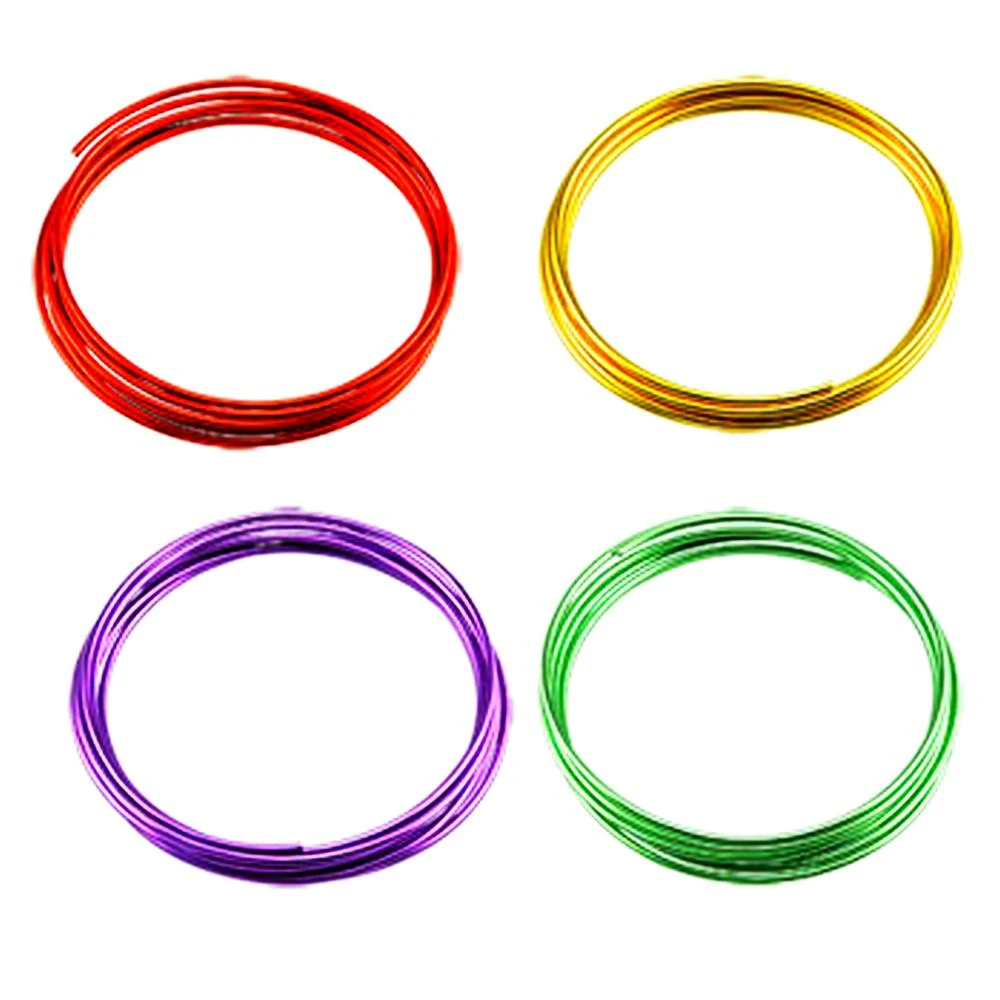When building with concrete, choosing the right binding wire is crucial. It’s the unsung hero that holds the steel skeleton of your structure together before the concrete comes in. But with so many different gauges available, picking the right one can feel like navigating a construction site in the dark.
That’s where this guide comes in. We’ll break down the binding wire gauge chart and equip you with the knowledge to choose the perfect gauge for a rock-solid project.
Binding Wire Gauge Chart: Your Blueprint to Rock-Solid Structures
Imagine those towering skyscrapers – before the concrete sets, it’s the binding wire holding all that steel in place. This essential material comes in different thicknesses, called gauges, ranging from 16 to 22. Just like choosing the right tool for the job, each gauge has its strengths. The thicker the wire (lower the gauge number), the stronger it is.
Before you grab the first roll of binding wire you see, consider the following:
- Project Scope: A garden fence has vastly different requirements than a multi-story building.
- Environmental Conditions: Will your structure be exposed to salty air, freezing winters, or extreme heat? Your wire needs to withstand the elements.
- Steel Type: Different types of rebar (the steel bars within concrete) work best with specific wire materials.
Here’s a quick breakdown of common binding wire gauges:
- Thick Wires (16-18 gauge): The heavy lifters of the binding wire world, perfect for large-scale projects and demanding conditions.
- Thinner Wires (19-22 gauge): These offer flexibility without compromising strength, ideal for lighter loads and more intricate work.
So, how do you choose the right gauge for your project?
- Calculate the Load: Determine the weight of the rebar being used in your structure.
- Consult the Chart: Refer to a binding wire gauge chart – your handy-dandy guide to recommended gauges based on load weight.
- Factor in the Environment: Adjust your choice based on weather conditions and the type of rebar being used.
Why is using a binding wire gauge chart so important?
- Eliminate Guesswork: Ensures your wire is strong enough for the job, giving you peace of mind.
- Optimize Material Usage: Avoid overspending on unnecessarily thick wire or risking structural instability with wire that’s too thin.
- Stay on Budget: Choosing the right gauge from the start saves money and potential headaches down the road.
Think of understanding binding wire gauge as your secret weapon for building durable structures.
What Factors Influence Binding Wire Gauge Selection?
Choosing the right binding wire gauge is like choosing the right foundation for your house – it’s fundamental to the integrity of your project. Here’s a closer look at the key factors to consider:
Tensile Strength:
This refers to the amount of pulling force the wire can handle before snapping. Higher tensile strength equals a tougher wire. Gauge and tensile strength go hand in hand – thicker wire means a higher gauge number and greater tensile strength.
Rebar Size and Load:
Rebars are the backbone of your concrete structure, and the binding wire holds them together. Larger, heavier rebars require a thicker, stronger binding wire to withstand the increased load.
Environmental Factors:
Exposure to harsh weather, extreme temperatures, and corrosive elements can weaken your binding wire over time. If your project will face these challenges, invest in a wire with protective coatings or choose a thicker gauge for enhanced durability.
Binding Wire Gauge Charts:
These charts simplify the selection process. They provide recommended gauges based on factors like load weight, rebar diameter, and spacing, taking the guesswork out of choosing the right wire for your specific project.
In essence, remember these key takeaways:
- Prioritize Strength: Tensile strength and gauge are crucial factors for reliable binding wire.
- Match Wire to the Job: Base your gauge selection on the size and weight of the rebars being used.
- Factor in the Environment: Harsh conditions demand tougher, more resilient binding wire.
- Utilize Charts: Binding wire gauge charts are invaluable tools for making informed decisions.
By carefully considering these factors, you can ensure your binding wire provides a solid and secure foundation for your construction project.
How Do I Choose the Right Binding Wire Gauge for My Project?
You’ve got your blueprints, your materials, and you’re ready to start binding. But before you do, let’s make sure you have the right binding wire gauge for the job:
Material Thickness: Thicker materials like heavy-duty metal sheets need a thicker, stronger wire to hold them securely. For delicate materials, a thinner wire will suffice without causing damage.
Load-Bearing Requirements: Is your project designed to hold significant weight, like a retaining wall? A thicker gauge wire is essential for handling the load and preventing structural failure.
Environmental Exposure: If your project will be exposed to the elements, choose a corrosion-resistant wire, especially in a thicker gauge for added durability.
Flexibility Needs: Some projects, like spiral notebooks, require flexible binding, while others, like fences, need to be rigid. Thinner gauges offer more flexibility, while thicker gauges provide unwavering strength.
Safety Considerations: Using wire that’s too thin can lead to your project falling apart, while using wire that’s too thick can be difficult to work with and may damage your materials.
Binding Wire Gauge Chart:
Refer to a binding wire gauge chart like the one below for visual guidance:
| Gauge | Diameter (inches) | Typical Uses |
|---|---|---|
| 20 | 0.032 | Light-duty binding, crafts, floral arrangements |
| 18 | 0.040 | Calendars, notebooks, light-duty construction |
| 16 | 0.051 | Heavier books, signage, general construction |
| 14 | 0.064 | Industrial applications, fencing, heavy-duty binding |
Remember: When in doubt, err on the side of caution and choose a slightly thicker gauge for added strength.
What are the Different Types of Binding Wire?
Binding wire isn’t one-size-fits-all. Let’s explore the different types available and their unique characteristics:
Black Annealed Binding Wire:
This is the workhorse of the binding wire world, offering a balance of flexibility and strength suitable for most construction projects. You’ll find it holding rebar together in walls, beams, and columns.
Stainless Steel Binding Wire:
This is the superhero of binding wire, laughing in the face of corrosion. It’s the ideal choice for outdoor projects, coastal structures, and any project exposed to harsh conditions.
Gauge Considerations:
Remember, binding wire also comes in different gauges (thicknesses). Thicker gauges (like 16 gauge) are for heavy-duty projects, while thinner gauges (like 20 or 22 gauge) offer more pliability for lighter applications.
Material and Finish:
Steel is the standard material for binding wire, but stainless steel offers superior corrosion resistance. Galvanized binding wire, coated with zinc, provides even greater protection against rust.
Eco-Friendly Options:
For the environmentally conscious builder, biodegradable and recycled binding wires are becoming increasingly available, offering the same strength and performance with a reduced environmental impact.
The next time you’re on a construction site, remember that the seemingly simple binding wire is more complex than it appears. Choosing the right type and gauge is essential for a strong, durable, and long-lasting structure. And with so many options available, you can find the perfect binding wire for any project.
If you’ve ever wondered about integrating smart home technology, you might find this article about Blink’s compatibility with HomeKit helpful. And for those curious about construction terminology, this article about reveals in construction provides valuable insights. When considering building materials, it’s essential to weigh the pros and cons. This article outlining the disadvantages of timber can help you make informed decisions for your next project.
- How to Stop a Hardwired Smoke Detector from Chirping: Causes and Solutions - April 20, 2025
- How to Grow Chickpeas (Garbanzo Beans) Successfully in Your Garden - April 20, 2025
- Is Groundhog Poison Legal? Safe & Effective Groundhog Removal Strategies - April 20, 2025










